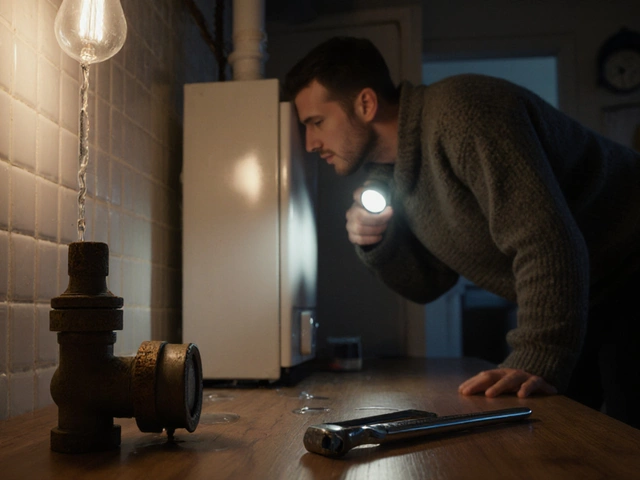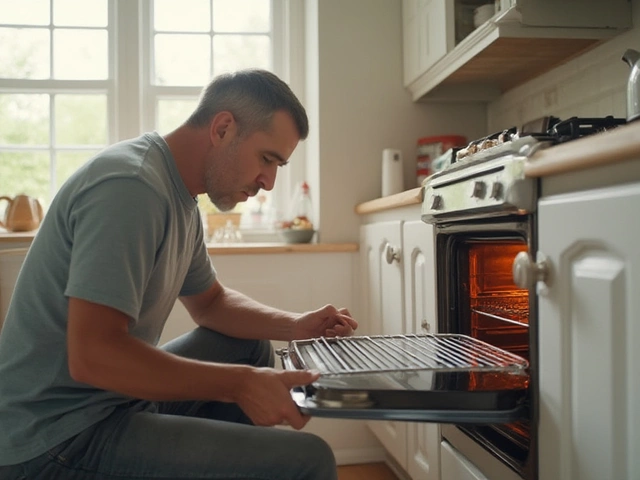Is it Worth Repairing a Freezer?
March 20 2025Troubleshooting Fan Problems: Quick Fixes & Maintenance Guide
If your extractor fan has stopped humming, is making a whine, or just isn’t moving air, you’re not alone. Most homeowners run into fan issues at some point, and often the fix is easier than you think. Below you’ll find the most common symptoms, what usually causes them, and step‑by‑step actions you can try before dialing a professional.
Common Fan Issues and What They Mean
No power at all. The first thing to check is the source of electricity. Make sure the switch is on, the plug is seated, and the circuit breaker hasn’t tripped. If the fan is hard‑wired, inspect the fuse box for a blown fuse or a tripped breaker.
Weak airflow. A fan that still runs but barely moves air often has a clogged filter or a blocked duct. Grease and dust build up quickly in kitchen fans, while bathroom fans can collect hair and soap scum.
Noise – rattling, humming, or squealing. Loose screws, a misaligned fan blade, or a worn motor bearing are usual suspects. In many cases, tightening a few bolts or cleaning the blade clears the noise.
Fan turns on and off repeatedly. This can be a sign of an overheating motor or a faulty thermostat. Overheating often occurs when the fan is running with a restricted airflow, so start with cleaning.
Intermittent operation. If the fan works sometimes but not always, the switch or wiring may have a loose connection. Wiggle the switch while it’s on – if the fan flickers, the switch probably needs replacement.
Step‑by‑Step Fixes You Can Do Yourself
1. Turn off the power. Safety first – switch off the breaker or unplug the unit before you start any work.
2. Clean the filter. Remove the filter (most are clip‑on). Soak it in warm, soapy water for 10‑15 minutes, scrub gently, rinse, and let it dry completely before reinstalling.
3. Check the duct. Detach the duct from the fan (you may need a screwdriver). Look for dust, cobwebs, or crushed sections. Use a vacuum or a garden hose to clear the inside, then re‑attach securely.
4. Inspect the fan blade. Look for cracks or bends. If the blade is dirty, wipe it with a damp cloth. Tighten any loose screws that hold the blade to the motor shaft.
5. Test the motor. After cleaning, turn the power back on. If the fan still hums but doesn’t spin, the motor may be seized. Lightly tap the motor housing with a rubber hammer – sometimes that frees a stuck shaft.
6. Replace the switch. If the fan’s on/off button feels loose or doesn’t stay in the ‘on’ position, replace it. Switches are inexpensive and can be swapped with a screwdriver.
7. Look for signs of wear. Burnt smells, rust, or visible water damage mean the fan needs a professional eye. Continuing to run a damaged fan can cause a fire hazard.
Once you’ve completed these steps, run the fan for a few minutes and listen for any odd sounds. If everything sounds normal and airflow feels strong, you’ve saved yourself a service call.
When you should call a pro: motor still won’t spin after cleaning, you spot electrical scorch marks, the fan sparks, or you’re uncomfortable working with wiring. A qualified gas engineer or electrician can safely replace a motor, re‑wire the unit, or advise if a full replacement is cheaper than repair.
Regular upkeep pays off. Cleaning the filter every 1‑2 months and checking the duct annually keeps airflow strong and extends the fan’s life by years. A quick visual check each season can spot trouble before it turns into a costly breakdown.
Now you have a clear roadmap for most fan woes. Start with the easy checks, move on to cleaning, and only then think about professional help. Your kitchen and bathroom will stay fresh, and you’ll avoid unnecessary service fees.
 25 Jul
25 Jul
How to Fix a Fan That Stopped Working: Step-By-Step Troubleshooting Guide
Fan not working? Learn how to troubleshoot and repair your fan with detailed, simple advice from real-life experience. No tech jargon—just practical help.
Read More...



